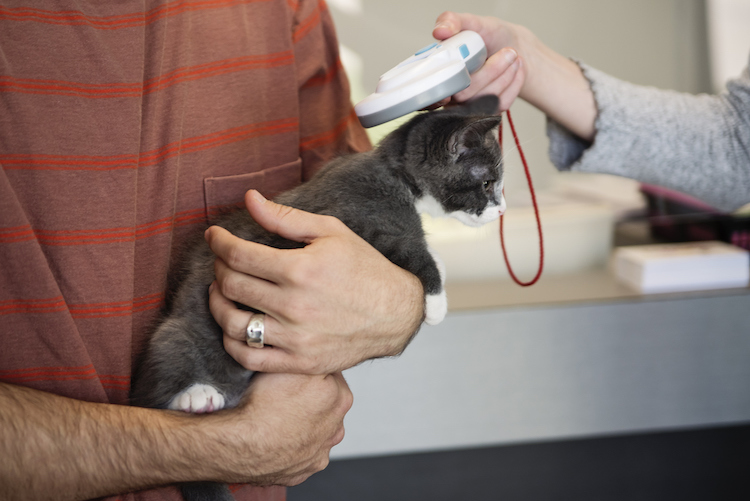How to Find a Lost Pet
The name call, the search, the panic. Realizing that your furry family member could be lost is a heart-stopping feeling. Did they run away? Are they close? Did I leave the door open? The best thing is to act quickly. To help you, here are some tips on where to start your search so you can be reunited with your best friend as soon as possible.
Thoroughly search your house and yard
It may seem obvious to search your own home, but it’s important to check every nook and cranny. If you have an adventurous animal at home, they may have gotten stuck or injured out of view or if they got spooked, they could have taken cover in an unlikely hiding spot.
Once you confirm that they are missing, try and determine how they escaped. It could help you form an idea about what direction they went in or how far they could be. Once you find them, knowing how they escaped can help you proof your home for the future.
Search your neighbourhood
They might not be far from home. Most lost cats are found 500 meters from home while 49% of pet parents find their lost dog in the neighbourhood.
Ask your neighbours to check under their decks, garages, sheds and any other places a pet could have gotten stuck.
If there’s more than one person searching, have someone stay at home while the others search. That way, someone is there in case your lost cat or dog finds their way back home or someone has found them and is trying to contact you using the information on your pet’s collar. If the number on the tag is your cell phone, make sure you take it with you.
Report your pet missing
Call local shelters and vet clinics. If someone finds your pet, they may bring them to one of these locations. If you call in advance and give them your contact details and provide a description, they will call you if a missing pet is brought in.
Additionally, if your cat or dog is registered with the city you live in you can file a missing report with them.
Create a lost pet poster
Make a poster that includes a photo of your pet, their name, their breed, fur colours, where they were last seen and your contact details.
Post them around your neighbourhood and at vets and shelters in your city.
Lost and found pets Facebook groups
Many cities have Facebook groups where pet parents post pictures of their lost furry family member and finders post pictures of the pets they find.
On Facebook, search “lost and found pets” and your city to find groups in your area.
Pet identification and registry

Critical to being reunited with your best friend is identification and registry services. And when it comes to missing animals, the more ways your pet can be identified, the better. Unfortunately, identification and registry services aren’t linked to each other and often use different technology. So, we encourage combining as many methods as you can.
ID Tags
When your pet has been properly immunized (and/or licensed), your veterinary clinic will provide you with identification tags that include their ‘file’ number, vaccination records and contact information for the clinic.
Pet Registry
A pet registry is a database that stores a unique identification number for your cat or dog and your contact details. This information can be used to help reunite you with your pet.
Most cities require pet owners to register their cats and dogs. When they’re registered, the city will send you a tag with a unique identification number, which they require pets to wear whenever they leave the house.
You can also register your pet’s microchip with a database.
Microchipping
Microchips are implants that provide permanent ID for your pet. If someone finds your lost cat or dog, they may take them to a vet or shelter where they will be scanned for a microchip.
The microchip is associated with a number, which a scanner can read. If it’s properly registered with your contact details at a pet recovery service, like our friends at 24Petwatch, the vet or shelter will notify the lost pet recovery specialists who will then contact you.
This service only works if your contact information is properly registered and up to date.
Tattoos
Less common now, but some veterinary practices give pet owners the option of having a small, relatively permanent tattoo made on the inside of a pet’s ear for identification purposes.
Even if preventative measures are taken, a pet’s curiosity and sense of adventure can lead them away from home. The process isn’t always easy and persistence is key. Get your friends, family and community involved in your search and hopefully, you and your best friend won’t be separated for long.
See our blog for more pet parent tips!
